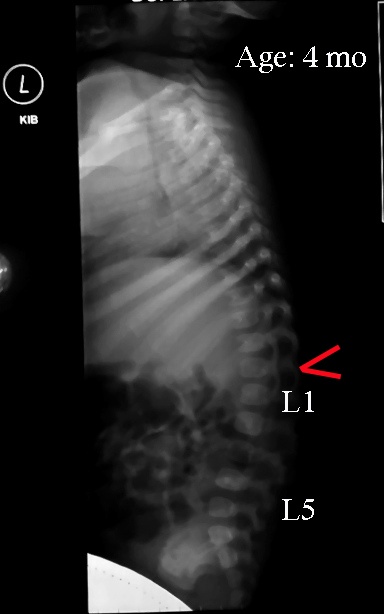Breastfeeding is hard. Believe me, I know. With my first, we dealt with inverted nipples, bad latch and a tongue tie. We were on shields for 6 straight weeks. I was lucky enough to stay home for the first 11 months, but this time around I had to find care for our daughter at 3 months.
The relationship with those care providers is always uneasy at first. You’re not sure how they’ll come to know your child as intimately as you have: the intricacies of what soothes them, what makes them upset, and how they sleep best took you so long to figure out. Every detail matters, even down to the way you change their diaper. It’s hard to imagine that a diaper change could save your breastfeeding relationship. But for me, it just might have.
When we started chiropractic care, we were lucky enough to be introduced to a Newborn Diaper Changing Technique. We’ve used the technique successfully with both our children.
My daughter (our 3-month-old) is what we describe as particular. She fusses the moment she has a wet diaper, doesn’t like to sleep and prefers to be worn to sleep. If you know her routine well, she’s an angel. Deviate from that routine and things can get ugly quickly.
You can imagine my hesitation to put her into daycare. The first two days things appeared to be going well enough. But by the third day we were having issues with the amount of milk I was bringing. They tried everything to keep her happy, but she got to the point where she was literally screaming. Bringing more wasn’t an option, but they insisted she was hungry. If I went to nurse her I would compromise my stash for the next day. I ended up having to pull her, but it made me wonder, “Am I making enough milk?”
The next day we dropped my daughter off at my mom’s house at 5:00pm. She’s not great with crying babies, so we always try to make a Plan B when we inevitably get the call that we have to come back. We dropped her off and she hadn’t been sleeping well all day, so we insisted she change her diaper and put her down immediately, but not feed her until 7:00, since she had already been fed. Around 7:00 we got a text saying that we had to come back. She had given the baby the bottle at 5:30 and she had become hysterical. I didn’t understand why my mom had so much trouble. When we got back she said the baby was inconsolable. We chalked it up to my mom’s ill ease with babies and took her home, but I still couldn’t quite help but wonder, “Am I pumping enough milk for her?”
The next day was Sunday and she preferred to be worn for every nap and was particularly particular. She also refused to be calm in the car unless I was in the back with her, talking to her. Monday she refused to sleep for most of the day, she was very fussy and woke up crying when she woke up. She would latch but pull off fussy. Once more I questioned my supply. My husband returned from work early to make some bank deposits and took the baby with him so I could get some work done.
He noted that she seemed particularly fussy in the car, screaming every time the car hit a bump. It was clear that she needed a visit to the chiropractor.
They were able to get us in to see Doc John and after the most excruciating car ride ever (we were both in tears) we made it to his office for an adjustment.
As he was adjusting her I realized: I never told them about the newborn diaper changing technique. He felt the subluxation in her vertebrae and nodded when it “clunked” (his word, not mine) back in. I thanked them and went to put her in the car. She screamed when I put her in the seat. I thought, Of course it’s not going to be a quick fix. No big deal. She’ll feel better later. But her screaming clearly was in anticipation of what she already experienced, because the moment I turned the car on and started to move, she fell asleep. No screaming every time the truck hit a bump. I cried (out of happiness this time).
Just imagine how different my week would have been had I remembered to tell our day care provider about the newborn diaper change. I would have saved myself milk, grief, and frustration. I wouldn’t have questioned my supply like I did. Her care providers would have been so much less stressed.
It’s hard to imagine how other parents cope with the newborn phase knowing nothing about these things. When I think about how much of my son’s first few months we spent not listening to Doc John’s advice, I wonder how different things could have been for us. I wonder how parents with fussy babies get along without a chiropractor. I’m not really sure how they do it. Maybe they blame it on “colic” or maybe they blame it on the baby. The truth is that babies know what they’re feeling. They don’t know how to manipulate. They just know that they rely on you to help them.
Questioning the validity of the diaper changing technique?

Check out the image of a newborn’s spine. This shows the difference between an adult spinal curve and newborn’s spinal curve. In the photo the peak of the spine is marked in red. The area marked “L1” is where the nerves for the intestines comes from. Those nerves pass through the dark spaces at the back of the square vertebra. In adults, the peak of the kyphosis (the primary curve, think of what “fetal position” looks like) is between the shoulders. In infants who haven’t started pushing up to crawl, bringing the pelvis up into flexion (as is done during a traditional diaper change) straightens the lumbar curve, then the spine bends at this axis. As the lumbar curve becomes more established with crawling, this kyphotic peak moves up the spine into the area of the true rib cage and no longer causes posterior migration of moveable segments during pelvic flexion. You can see now why a subluxation in this area might cause such a problem.
Consider the impact that a relationship with a pediatric chiropractor that specializes in infants could have on your baby.





